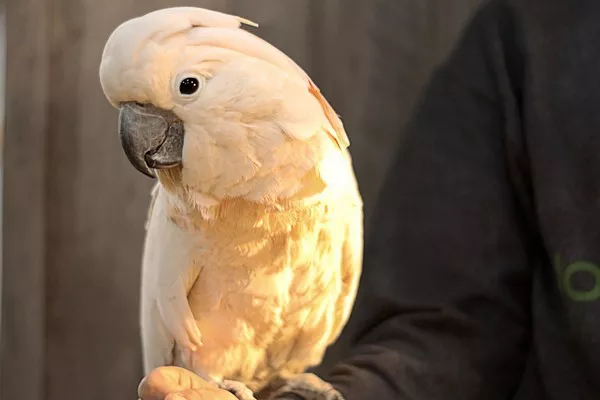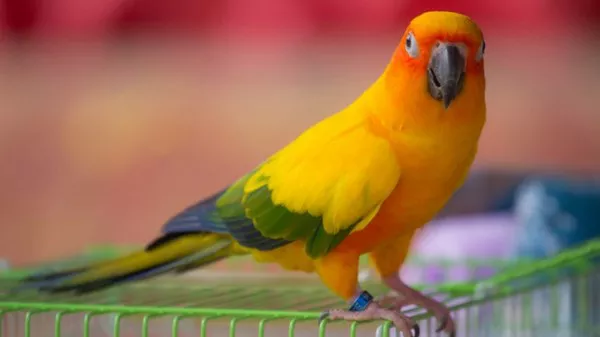The sun conure, also known as the sun parakeet (Aratinga solstitialis), is a brightly colored parrot native to South America. With their vibrant plumage and charming personalities, sun conures are highly sought-after as pets. However, understanding their natural behavior, including their mating season, is critical for both avian enthusiasts and breeders. This article delves into the specifics of the sun conure’s mating season, offering insights into their behaviors, environmental needs, and the factors that influence reproduction.
Overview of the Sun Conure
Sun conures are medium-sized parrots characterized by their stunning yellow, orange, and green feathers, along with a playful and affectionate demeanor. In the wild, they inhabit tropical forests, savannas, and coastal regions, mainly in northeastern South America. Their social nature makes them thrive in flocks, often consisting of 20-30 birds.
In captivity, sun conures are popular for their intelligence and ability to bond closely with humans. However, they retain many natural behaviors, including those related to reproduction, which are crucial to understand if you’re considering breeding them or simply want to provide the best care.
When is the Mating Season for Sun Conures?
In their natural habitat, sun conures typically mate during the warmer, rainy seasons, which coincide with the availability of abundant food resources. For wild populations, the mating season often begins in the spring and can extend into the summer. This timing ensures that chicks are born during a period when food is plentiful, increasing their chances of survival.
In captivity, however, the mating season can be less predictable. Factors such as artificial lighting, controlled temperatures, and consistent access to food can influence their reproductive behaviors. Many captive sun conures can breed year-round if environmental conditions are favorable, but their natural instincts may still align with spring and summer months.
Signs of Mating Readiness in Sun Conures
To determine when a sun conure is ready to mate, there are several behavioral and physical cues to look for:
1. Bonding Behavior
Sun conures often form strong pair bonds with a mate. During the mating season, these bonds become more evident as the birds engage in mutual preening, feeding each other, and staying in close proximity.
2. Courtship Displays
Males typically perform courtship rituals, such as head bobbing, wing displays, and vocalizations, to attract the female. These behaviors are more frequent and pronounced during the mating season.
3. Increased Vocalization
While sun conures are naturally vocal birds, you may notice a surge in their calls and chatter during mating readiness. These sounds are part of their communication during courtship.
4. Nesting Behavior
Both male and female sun conures exhibit nesting behaviors, such as exploring potential nesting sites, shredding paper or other materials, and spending time in enclosed spaces.
Environmental Factors Affecting Mating Season
Several environmental factors play a role in triggering the mating season for sun conures, both in the wild and in captivity:
1. Daylight Hours
In the wild, longer daylight hours during spring and summer signal the onset of the breeding season. In captivity, you can mimic these conditions by providing 12-14 hours of light per day using artificial lighting.
2. Temperature
Warm temperatures also stimulate reproductive behaviors. Maintaining a consistent, warm environment can encourage breeding.
3. Diet
A nutrient-rich diet is crucial for successful mating and chick-rearing. In the wild, an abundance of fruits, seeds, and nuts during the rainy season supports reproduction. Captive sun conures should be provided with a varied diet that includes fresh fruits, vegetables, high-quality pellets, and occasional protein sources like cooked eggs.
4. Nesting Opportunities
Providing a suitable nesting box can encourage breeding in captive conures. The box should be made of wood, sized appropriately (about 12x12x12 inches), and positioned in a quiet, secure location.
The Reproductive Cycle of Sun Conures
Understanding the reproductive cycle is essential for successfully managing sun conure breeding:
1. Pair Bonding
Sun conures typically select a mate and form a strong bond that can last for life. This pairing often occurs before the mating season begins.
2. Mating
Once bonded, the male and female will engage in copulation. This process involves the male positioning himself on the female’s back and the two aligning their cloacas.
3. Egg-Laying
After mating, the female lays eggs, typically 3-5 per clutch. The eggs are laid at intervals of one or two days.
4. Incubation
The female primarily handles incubation, which lasts about 23-27 days. The male assists by bringing food to the female during this period.
5. Chick Rearing
Once the chicks hatch, both parents contribute to feeding and caring for them. The chicks remain in the nest for 7-8 weeks before fledging.
Challenges in Breeding Sun Conures
While breeding sun conures can be rewarding, it also comes with challenges:
1. Compatibility
Not all sun conures will form compatible pairs. Ensuring that the birds get along well is a prerequisite for successful breeding.
2. Health Concerns
Breeding birds must be in optimal health. Pre-breeding veterinary check-ups can help identify potential issues.
3. Over-Breeding
Breeding too frequently can be taxing on the birds, particularly the female, as laying eggs depletes calcium and other nutrients. It’s important to allow sufficient rest periods between clutches.
4. Hand-Raising Chicks
If the parents cannot care for the chicks, hand-raising becomes necessary. This process requires significant time and effort and should be undertaken only with proper knowledge and equipment.
Tips for Encouraging Breeding in Captive Sun Conures
If you wish to breed sun conures, here are some tips to promote successful reproduction:
1. Create a Comfortable Environment
Mimic their natural habitat as closely as possible with proper lighting, temperature, and diet.
2. Offer Nesting Options
Provide a clean, secure nesting box to encourage nesting behavior.
3. Monitor Behavior
Keep an eye on the birds for signs of mating readiness and ensure they are healthy and stress-free.
4. Seek Expert Advice
If you are new to breeding, consult experienced breeders or avian veterinarians for guidance.
Ethical Considerations in Breeding Sun Conures
Breeding sun conures should always be approached responsibly. Here are some ethical considerations:
1. Avoid Overpopulation
Ensure that you have homes lined up for the chicks before breeding. Contributing to overpopulation can lead to neglected or abandoned birds.
2. Focus on Health
Only breed birds that are healthy and free of genetic disorders to promote the well-being of future generations.
3. Respect Natural Behaviors
Allow the birds to breed and rear chicks naturally whenever possible, rather than relying solely on hand-rearing.
Conclusion
Sun conure mating season is influenced by environmental conditions, natural instincts, and the availability of resources. In the wild, these birds breed during the warmer, rainy seasons, but in captivity, factors like light, temperature, and diet play a more significant role. Whether you’re a breeder or a devoted pet owner, understanding the nuances of sun conure reproduction helps ensure their well-being and fosters a deeper appreciation for these vibrant and intelligent parrots. By providing a supportive and ethical environment, you can witness the wonders of their natural behaviors and contribute to their thriving existence.
Related Topics:























